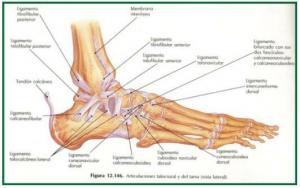The PARTS of a ROSE and their FUNCTIONS
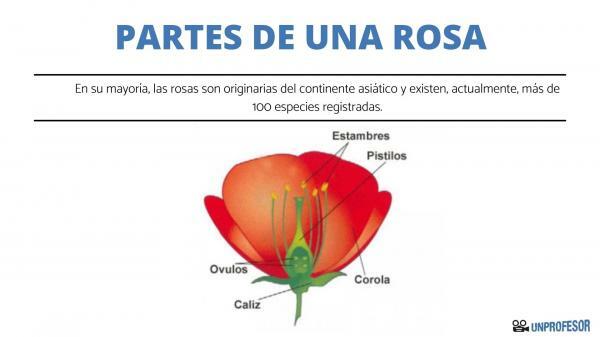
The roses, also called rose bushes, are part of the group of thorny-type bushes belonging to the rosaceae. This family is characterized by the beauty and color of its flowers capable of easily attracting the pollinators to get, through fertilization, a seed capable of creating a new plant with identical features.
In this lesson from a teacher we are going to discover you what are the parts of a rose so that you can better distinguish this type of tree so abundant and common in our nature. We started!
Index
- The parts of a rose
- Corolla
- Petals
- Chalice
- Pistil
- Androecium
- Types of roses and their classification
The parts of a rose.
Mostly, roses are native to the Asian continent and there are currently more than 100 registered species. In addition, it is one of the best known and commercialized flowers in the world, both as a cut flower and to be used as an ornamental shrub in gardens, patios and balconies around the world.
Knowing more about this popular plant will help us not only better understand why these colors are so but to learn more about the process of growth, maturation and reproduction of these flowers so iconic.
The parts of a rose are:
- Corolla
- Petals
- Chalice
- Pistil
- Androecium
Next, we will talk about each part in detail so that you can better understand the parts of the rose and its functions.
Corolla.
In charge of protecting the flower and that it is composed of modified sheets. These leaves are usually deep green in the case of roses. In fact, it usually gives off an aroma capable of attract insects and even, in some types of rose, contain liquid with sugars to increase the chances of pollination of the flower.
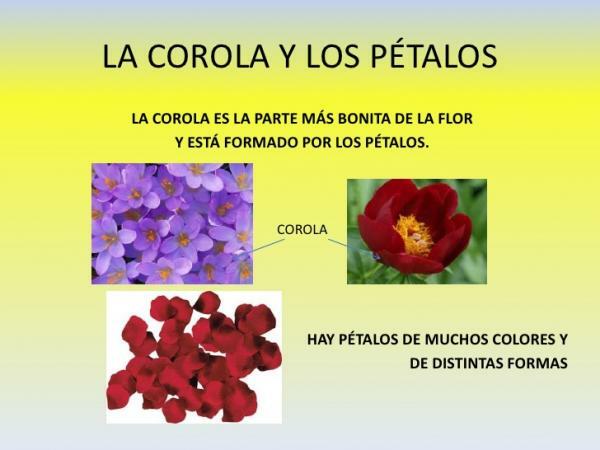
Petals
Like the modified leaves found on the corolla, the petals can also present not only in different shades, but to be able to take such disparate colors, in the case of roses, ranging from the white to red, through yellow, pink, orange and even of various colors.
The petals of the roses can be presented together or separately, although in general they are always presented separately. This formation is known as dialipetal.
In fact, depending on the shape, size and coloration of the petals, roses are classified into:
- Simple roses, if they have less than 8 petals
- Semi-doubles with between 8 and 20, semi-filled with more than 21 petals
- Full when the rose exceeds 40 petals
Chalice.
This is another part of a rose and is made up of green modified leaves, known as sepals, which are separated from each other and which protect the interior of flower cycles. Depending on the shape of the sepals, we talk about:
- Regular calyx, where they are all the same shape or size
- Irregular, otherwise.

Image: ClipStudio
Pistil.
Located in the center of the rose, is the pistil u female of the flower. This is composed of one or more modified leaves known as carpels.
The pistil, also known as gynoecium, is formed by the style, a kind of column that connects the ovary with the stigma. It is precisely in the stigma where the pollen grains are concentrated, remaining attached here to complete the flower fertilization.
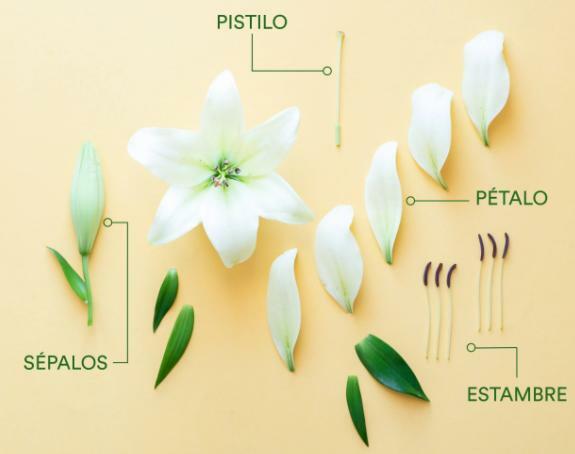
Image: Flora Queen
Androecium.
It is the male reproductive system of plants. In fact, it is by having both parts that roses are called as full flowers. The androecium is made up of the stamens, made up of the anther and the filament.
The anther is the most important section of the stamen, this is where pollen is created. In addition, the anther is divided into two parts, completely symmetrical, known as pollen sacs. The filament, which is the part that connects with the yarn, is very flexible and has a cylindrical shape.
As a curiosity: Al fruit of the rose is known as rose hip, a type of fruitiness formed by small nuts that are separated and enclosed in a fleshy receptacle. Once ripe, the rose hip turns red.
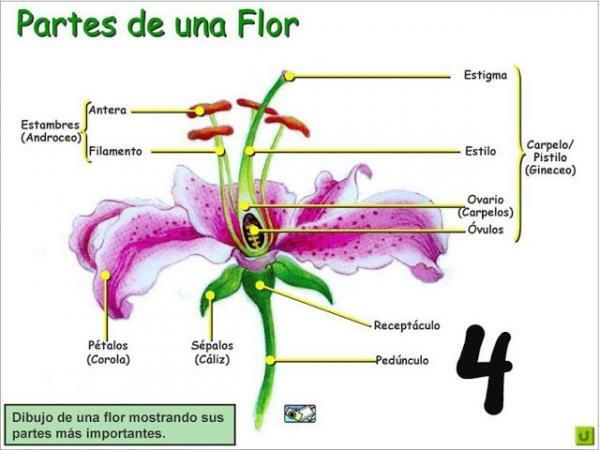
Image: Biology and chemistry teacher
Types of roses and their classification
Although we have indicated one of the existing classifications according to the number of petals a rose has, it is also important to know the most generic and used classification by the experts. Thus three groups are distinguished:
- Wild roses or those that exist in nature
- Old roses or those whose varieties begin in the seventeenth century
- Modern roses or those varieties belonging to the last centuries.
Classification of modern roses
Among these three groups, we highlight modern roses or rose bushes, which are, today, the most used. These can also be classified in turn into:
- Shrub roses or those that are most similar to wild roses.
- Floribunda roses or those smaller roses presented in clusters.
- Grandiflora roses or roses arranged in corymb.
- Hybrids of tea or roses created for the manufacture of cut flowers.
- Miniature rose bushes or bouquet roses made up of about 11 tiny roses
- Polyantha roses or roses compactly placed creating ornate shrubs.
- Rosales Sarmentosos or climbing roses whose flowering time usually occurs in summer.
- Upholstery roses or creeping roses that are presented in bouquets used to cover rockery.
- Climbing roses or large, long-stemmed roses with abundant flowering.
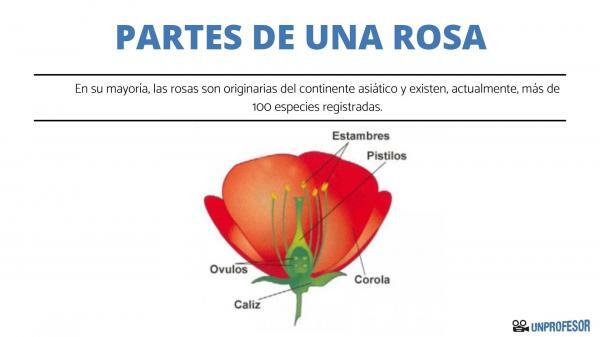
If you want to read more articles similar to Parts of a rose and their functions, we recommend that you enter our category of biology.
Bibliography
- José Jaramillo Plitt (2006) The flower and other derived organs

